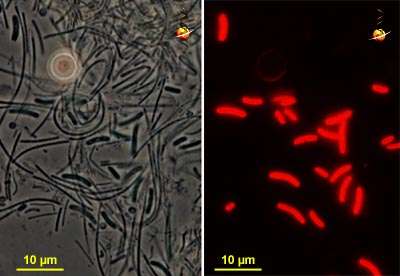Cyanobacteria
( < 1 µm individual cells – 100 µm colonies)
Cyanobacteria, or "blue-green algae", are actually bacteria with the photosynthetic capability of plants. They occur as single cells, bundles of cells, or long filaments. Cyanobacteria are the oldest group of photosynthetic organisms on Earth, dating back 3.2 billion years, over 2.5 billion years before the emergence of land plants.
Cyanobacteria are characterized by high protein content and have been explored as a possible nutritional supplement for humans. In many coastal ecosystems of Florida, small single-celled cyanobacteria are the dominant form of microscopic algae in the water in terms of numbers, but due to their small size are often outweighed by larger diatoms and dinoflagellates in terms of biomass. Nonetheless, they represent a major food source for bivalves, in part due to their rapid cell-division rates.
While some filamentous forms of cyanobacteria attached to surfaces have been associated with the production of toxins, the marine planktonic cyanobacteria commonly found along coastal Florida have not been associated with the production of toxins. Some remote threat exists for the periodic exposure of coastal waters to toxic freshwater cyanobacteria in areas of high freshwater discharge from eutrophic rivers, such as the Caloosahatchee and St. Lucie canals, which discharge water from Lake Okeechobee.
Common Species:
Below you will find a list of example cyanobacteria species. When you click on a species in the list, you will find a biographical sketch with information about what the species looks like, where and how often we found it in our study (see Sampling Locations for sampling dates and locations), and the potential "good" and "bad" effects on clams. Most species have the potential to harm clams if they form dense blooms; however, the "good" and "bad"categories on this page refer to the acceptability of individual cells as food items.
Cryptomonas spp.
Found in: Indian River and Suwannee Sound
Site(s): Sebastian DE;GJ;PI;HB;PR;SR
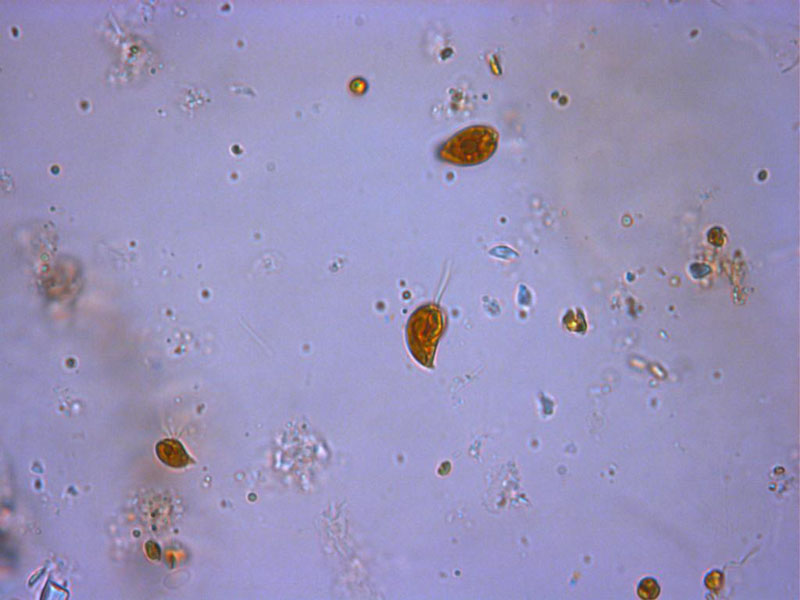
Lyngbya spp.
Found in: Suwannee Sound
Site(s): PI;SR
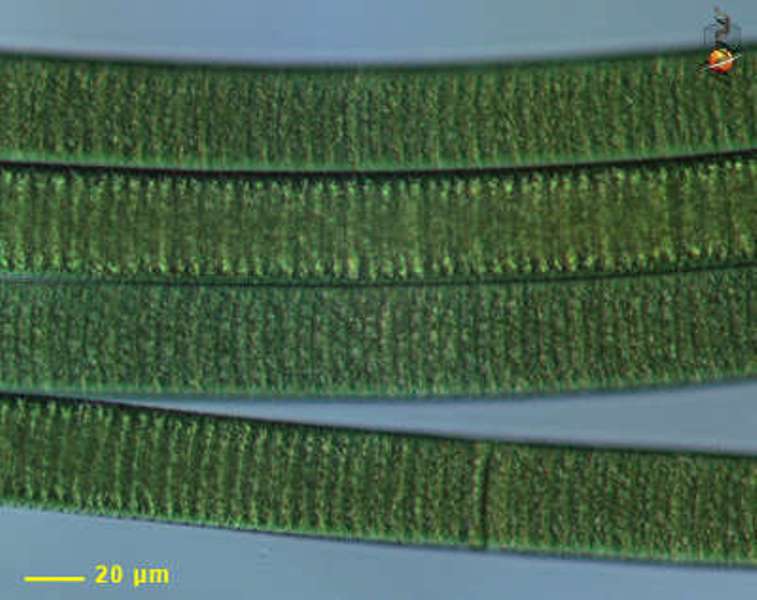
Merismopedia spp.
Found in: Indian River and Suwannee Sound
Site(s): Sebastian SR
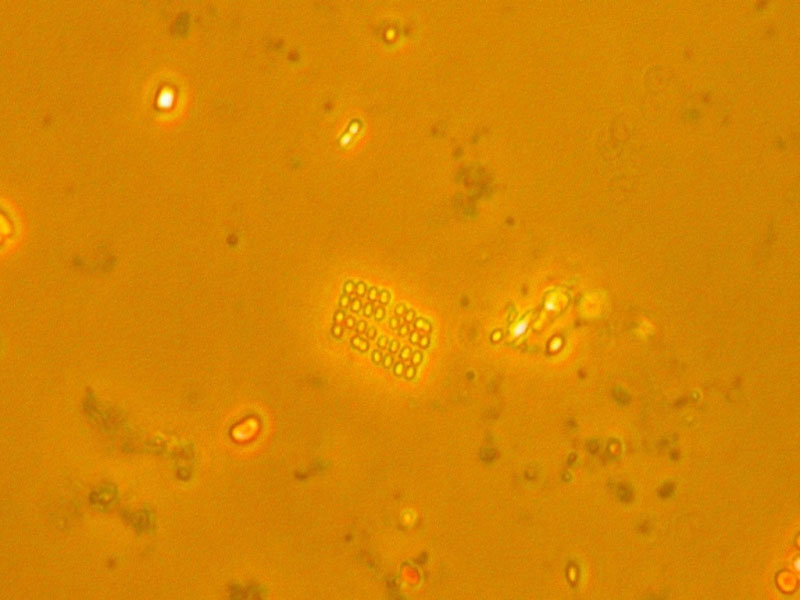
Microcystis spp.
Found in: Suwannee Sound
Site(s): DE;GJ;PI;HB;PR;SR
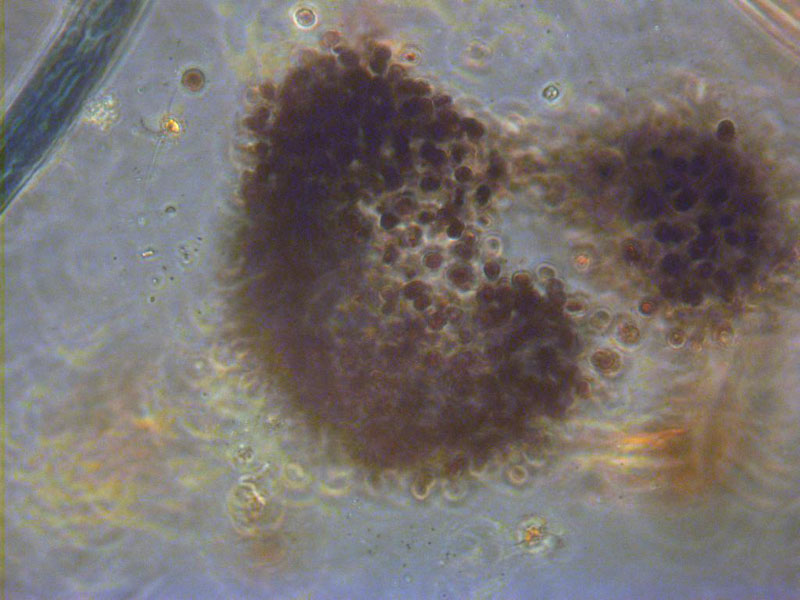
Oscillatoria spp.
Found in: Indian River and Suwannee Sound
Site(s): Sebastian SR
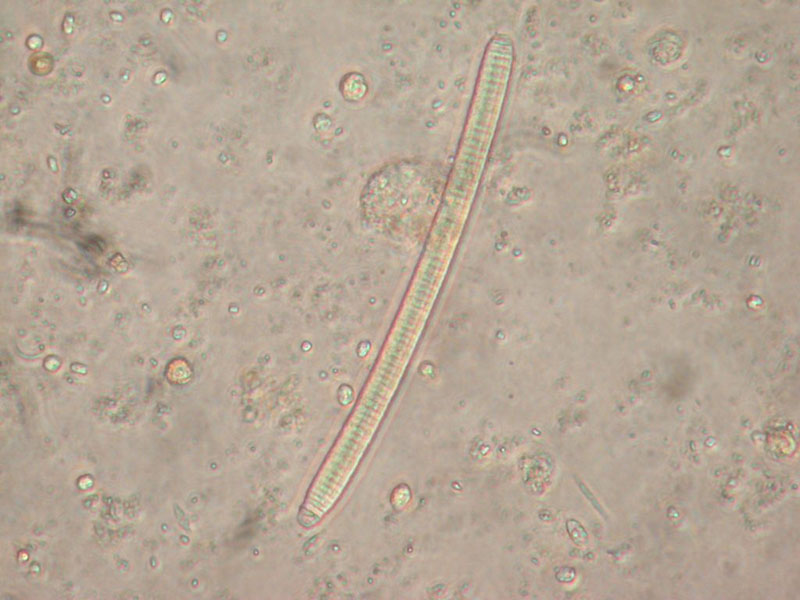
spherical picoplankton
Found in: Indian River and Suwannee Sound
Site(s): Sebastian DE;GJ;PI;HB;PR;SR
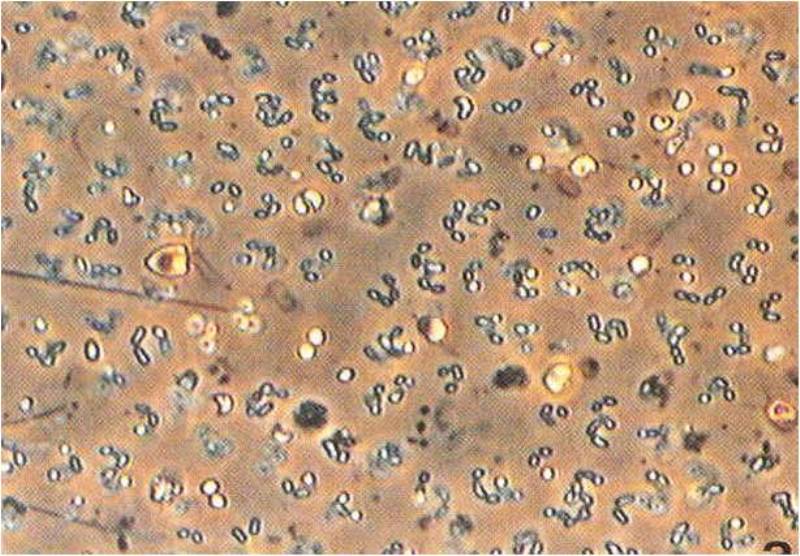
Synechococcus spp.
Found in: Indian River
Site(s): Sebastian
